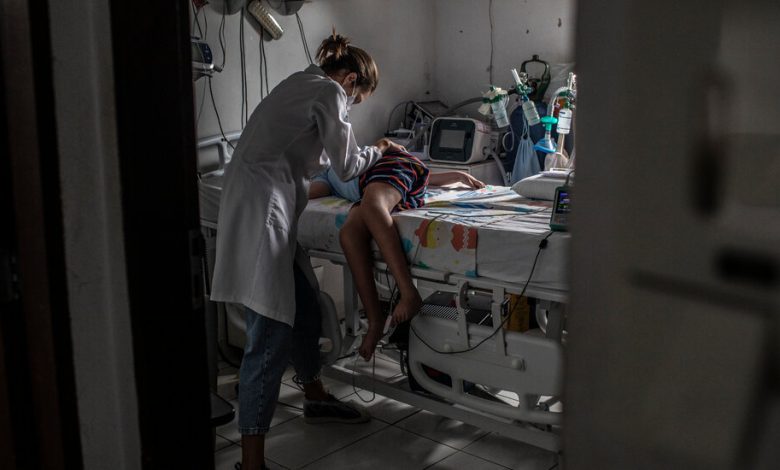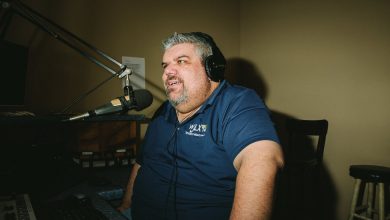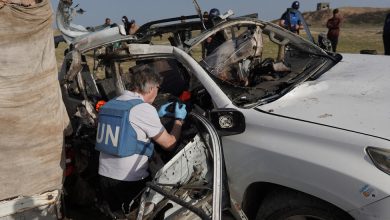A Dilemma for Governments: How to Pay for Million-Dollar Therapies

Suhellen Oliveira Da Silva was six months pregnant when she learned that the child she was carrying had the same disease that had left her firstborn son paralyzed and nearly mute. But this time, there was a treatment available that could make a profound difference. This baby could live a normal life.
The problem was the price: The treatment cost the equivalent of $1.7 million, and the public health system in Brazil, where the family lives, was refusing to pay for it.
So Ms. Da Silva went to court — and won. A judge ruled that the government had to buy the therapy for her younger son, Levi.
Today, Levi, 2, chats and claps and crawls, all things his older brother Lorenzo, 10, has never been able to do.
The treatment, called Zolgensma, a one-time infusion, is among the first in a new class of cutting-edge gene therapies that offer enormous promise for people with fatal or debilitating conditions — at hugely expensive prices. Its maker, the pharmaceutical company Novartis, has negotiated deals with national health systems and insurers to get the drug covered in many of the richest countries.
Now, with its sales slowing, the company is pushing to get broad coverage in middle-income countries such as Brazil, where public health systems are often fragile and underfunded.
Zolgensma, which treats a rare genetic disorder known as spinal muscular atrophy, or S.M.A., was for a time the world’s most expensive treatment. It has become a closely watched test of whether such therapies can win broad coverage around the globe, and what the trade-offs might be.
Brazil’s experience with Zolgensma shows the challenges that the breathtaking prices of these therapies will pose for governments and insurers with limited budgets. Those challenges are poised to multiply in the next few years as more such treatments become available for larger groups of patients.
After more than 100 successful lawsuits from families forcing the Brazilian public health system to pay for the treatment for their children, the government announced in December that it would begin covering Zolgensma by default for infants with the most severe cases of S.M.A. later this year.
The government has agreed to pay the equivalent of about $1 million for each treatment — much less than what some other governments are paying, but still a staggering sum for Brazil’s strained health system.

After his mother won access to Zolgensma in the courts, Levi received the therapy and can now chat, clap and crawl, all things Lorenzo has never been able to do.
At a government hearing on the coverage issue, a congresswoman, Adriana Ventura, expressed sympathy for the families seeking the treatment, but said, “We also cannot be irresponsible and approve something that is not sustainable in the long term.”
She added the concern is that “in order to give to one, you have to take the basics from millions of others.”
The expenditures for Zolgensma have already gobbled up a hugely disproportionate share of resources. An analysis led by a researcher at Brazil’s drug regulator found that the court-ordered expenditures in Zolgensma’s first 14 months of availability in Brazil could have paid for more than four million doses of the Covid-19 vaccine.
Over the past decade, wealthy countries have devoted a growing share of their pharmaceutical budgets to paying for expensive drugs that treat a tiny fraction of their citizens. Their spending on so-called specialty drugs, which treat rare and often serious diseases and can come with enormous price tags, now represents about half of their drug expenditures. And it is expected to keep growing.
“The situation simply isn’t sustainable,” said Ruth Lopert, a health economist at George Washington University. “Countries simply aren’t going to be able to afford these products, at the prices that are being asked.”
Among the most unaffordable are gene therapies such as Zolgensma that promise to transform inherited disorders with a one-time treatment. Zolgensma’s list price of $2.1 million in the United States in 2019, believed to be the highest ever when it was set, has since been surpassed four times, and many more treatments expected to be as expensive are on the horizon.
“This is the long hoped-for wave of innovation that will help address some life-threatening and fatal conditions,” said Dr. Steven Pearson, president of the Institute for Clinical and Economic Review, which assesses the value of medicines. “But if it comes all at once and the payments can’t be stretched out, it will have a crushing effect.”
Wealthy countries have already been grappling with paying for the new therapies.
In Europe, a product approved for a deadly neurological disorder known as metachromatic leukodystrophy was given list prices of up to $3.9 million. Germany’s health system last year agreed to pay for it at a discounted $2.6 million.
In the United States, the biotechnology company Bluebird Bio last year set price tags of $2.8 million when it won approvals to treat an inherited blood disorder called beta thalassemia and $3 million to treat a fatal neurological condition known as cerebral adrenoleukodystrophy. When European health systems previously refused to pay what Bluebird was asking for the products, the company withdrew them from the continent.
While there are more than six million people worldwide with sickle cell, most of whom living in sub-Saharan Africa, the initial launches are expected to focus on tens of thousands of patients in the United States and Europe.
Record-setting price tags for gene therapies have largely escaped the criticism that has followed other industry pricing decisions. The sentiment reflects just how powerful many of the gene therapies are — doctors sometimes go as far as to call them cures — and their unique position as one-time treatments. Such a therapy has just one chance to earn money, and in some cases can replace chronic treatments that would otherwise be given for the rest of a patient’s life at a much higher cumulative cost.
Still, for middle-income countries, “if benefits of these therapies are immediate in terms of health but the potential savings happen in the future, that math may not work for them,” said Rena Conti, a health economist at the Questrom School of Business at Boston University.
Tay Salimullah, a Novartis executive, said the company works closely with governments and health plans considering whether to cover Zolgensma, in some cases allowing them to spread out their payments over time, like a mortgage, or offering a price cut if the treatment doesn’t work.
In Brazil, the agreement with Novartis calls for the government to split payments for each treatment into five equal parts over four years. If a patient dies, must be permanently ventilated or is unable to maintain certain motor functions two years after receiving Zolgensma, the government will not be required to make the subsequent payments.
‘This Kid Has a Future’
Until six years ago, there were no approved treatments for S.M.A., which affects about one in 10,000 newborns. Infants with the most severe form of the disorder were sent home and their families were told to prepare for them to die.
Zolgensma and two other drugs approved since 2016 have opened up once unimaginable possibilities for S.M.A. patients. “I’m telling parents to keep putting money in their college fund because this kid has a future,” said Dr. Thomas Crawford, who treats S.M.A. patients at Johns Hopkins Medicine.
Zolgensma works by replacing the missing or nonfunctioning gene causing S.M.A. with a working copy of the gene. It has been given to more than 2,500 children and approved for use in 46 countries. Novartis says more than 35 of those countries have “access pathways” in place.
Studies show Zolgensma can stop infants and toddlers from continuing to lose nerve cells that control muscle movement, preventing further decline, but it cannot restore motor or muscle function that older children have already lost.
If Zolgensma is given soon after birth, children may develop no significant disabilities. Children who receive the drug when they are a little older may avoid a feeding or breathing tube, and may be capable of some movement, rather than a life spent immobile like Lorenzo.
Patients have in most cases been able to access Zolgensma without issue in the United States, Britain and Canada, according to doctors and patient groups there. But several American parents and their attorneys described monthslong delays when health plans temporarily balked, during which children started showing signs of S.M.A. as they waited for treatment.
In Brazil, where more than half the population relies on the public health system, families seeking Zolgensma for their children tried to raise funds through crowdfunding websites or obtain it without charge through a clinical trial.
But most often, they turned to the courts. As of November, judges had forced the Brazilian health system to pay for 102 Zolgensma treatments at an average cost equivalent to $1.6 million, according to the Ministry of Health.
A Right to Health
Ms. Da Silva had never heard of S.M.A. when Lorenzo was diagnosed at 6 months old, in 2013. He had been developing normally, and then his progress suddenly stopped. Doctors said there was nothing to be done.
When Ms. Da Silva learned in 2019 she was unexpectedly pregnant with Levi, doctors said he might never have disabilities from S.M.A. if she could get Zolgensma for him soon after he was born.
The family had been struggling to make ends meet. Ms. Da Silva had quit her job as a travel agent in order to fight for full-time home care and therapies for Lorenzo; her husband, Azen Balbino, had spells of unemployment in Brazil’s recession. They knew they would need to rely on a process Brazilians call judicilizacão, in which theyeffectively sue the federal government by invoking the constitutionally protected right to health to force the public system to pay for a medication or therapy that it would not otherwise provide.
While Ms. Da Silva was still pregnant, she enlisted the help of Viviane Guimarães, a lawyer in her northern Brazilian city of Recife who agreed to take her case. (Lawyers in such court battles typically do not charge the S.M.A. families they represent. When the government loses a case, it can be ordered to pay a fee to the successful family’s lawyer, but that payment is withheld when the government appeals a decision, as has happened with Levi’s case.)
When Ms. Guimarães stood before the judge to make the case for a therapy with a huge cost, she argued that it would save the government money compared with other drugs Levi would need to take for life and with the cost of all the care he would need without it.
Lorenzo receives three kinds of therapy every day. He watches cartoons while a physiotherapist makes a twice-daily visit to pummel on his chest and suction the secretions that would otherwise suffocate him. He communicates with Ms. Da Silva through a breathy whisper and by blinking and squinching the cheek he can still move. While this happens, Levi clambers over Lorenzo’s inert legs, singing along with the television and imperiously giving orders for things such as Popsicles and cookies to the health aide, one of three who take shifts to stand by Lorenzo’s bed 24 hours a day.
While Levi has not met all of the normal developmental milestones of a child his age, he is mobile and talkative. He has daily occupational and physical therapy and continues to progress in physical development.
When Ms. Guimarães won a favorable judgment in Levi’s court battle, the federal government had to set aside the money to purchase Zolgensma. Ms. Da Silva dashed to the bank to get the money sent by wire transfer to a Novartis account in Ireland, triggering the shipment of the medication. She and her husband rushed to São Paulo with Levi to be on standby at a hospital willing to do the infusion. He received the tiny vial of 47.8 milliliters of Zolgensma at 16 months old.
Every time she sees her two boys together, Ms. Da Silva is reminded of the stunning power of Zolgensma. Her happiest moments, she said, come when she’s with Levi and he reaches up, pushes on her cheeks to get her attention and demands, “Mamãe, Mamãe” like any other toddler.
“Levi speaks like a child who doesn’t have S.M.A.,” she said.
Few Resources to Spare
Novartis has so far brought in $3.7 billion in revenue from Zolgensma, charging different prices in different places based on its agreements with health systems and insurers. The company said it determines its local prices based on factors including a country’s gross domestic product.
Countries have negotiated lower prices than the $2.1 million price tag that captured headlines. South Korea, for example, won’t pay more than the equivalent of $1.5 million per patient.
The treatment is one of Novartis’s top sellers, but it has not become a mega-blockbuster in part because so few patients are eligible for it. And sales have begun to slow.
Middle-income countries like Brazil could open the door to many more patients.
Novartis has already won coverage for Zolgensma in Russia, Egypt and, most recently, Argentina, where the government announced this month that it had agreed to pay $1.3 million per treatment.
Novartis’s chief executive, Dr. Vas Narasimhan, last year named three middle-income countries — Brazil, Turkey and India — as key expansion markets for Zolgensma. The company remains in negotiations over access to the treatment in more than 10 countries, including Ecuador.
In Brazil, the government has agreed to cover the treatment only for babies with the most severe form of S.M.A. who can breathe independently for at least most of the day. They must also be under 6 months old.
Under the deal with Novartis, the Brazilian government has agreed to pay for Zolgensma for no more than 250 babies over the next two years. If demand is higher than that, Novartis will chip in with 40 free treatments. At most, assuming a steady pace of treatments, the government would spend the equivalent of about $50 million for this first group of children this year and a total of $200 million over the four years after that.
In comparison, a Brazilian program known as the people’s drugstore had a budget last year equivalent to about $380 million to serve over 21 million people, providing free access to drugs used to treat conditions such as asthma, diabetes and high blood pressure. The government allocated another $430 million last year for its program for H.I.V. and other sexually transmitted infections.
The public health system provides health care to more than half of the roughly 216 million people in Brazil. In rural areas of the country, health centers may have a single doctor. Clinics and hospitals in low-income areas lack basic supplies and technology more sophisticated than X-ray machines.
“We’re talking about a super expensive medication. But when you go to the hospital, the nurse doesn’t even have a pair of latex gloves,” said Ms. Guimarães, the Da Silva family lawyer.
“But people are going to have to get comfortable with the debate,” she added, “because there are going to be many more therapies like this.”
Lis Moriconi in Rio de Janeiro and André Spigariol in Brasília contributed reporting.




